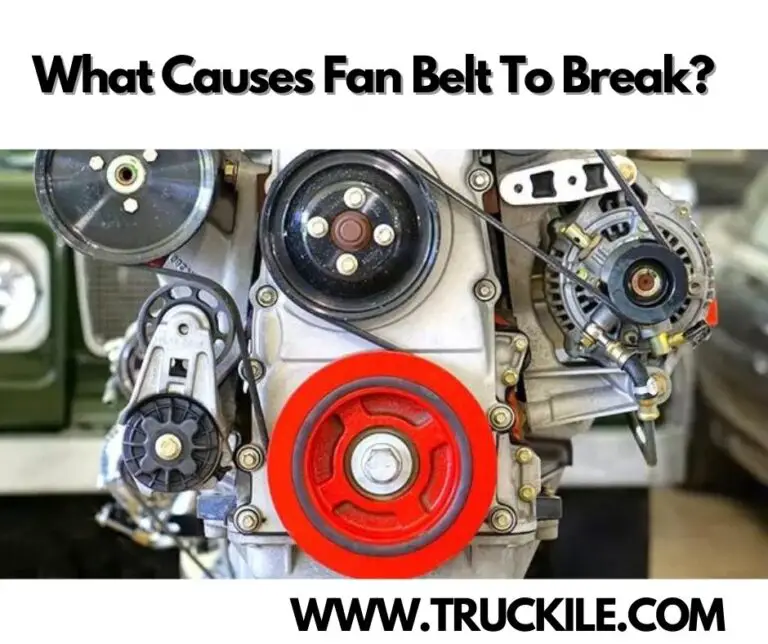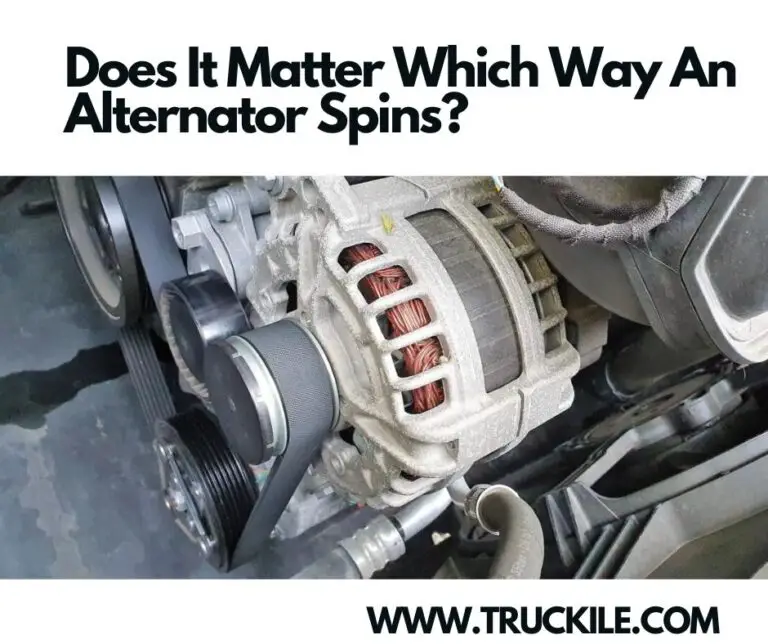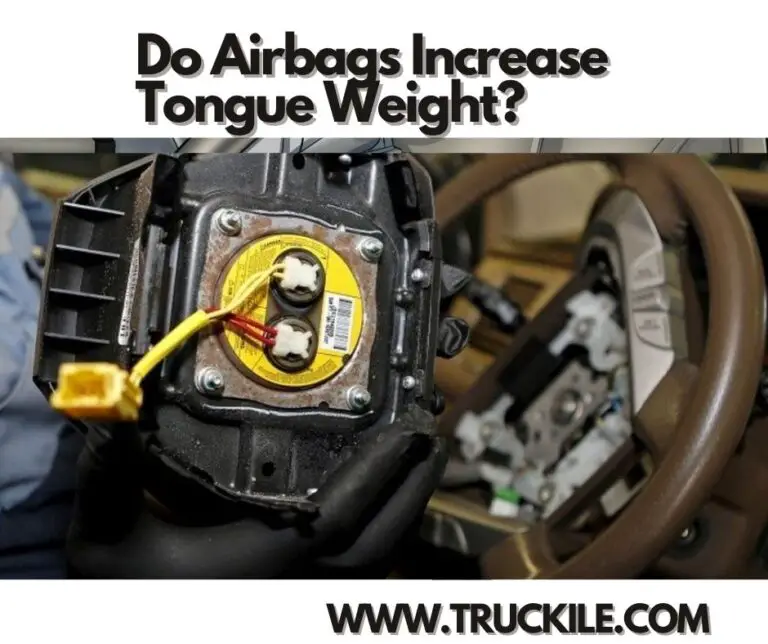Why Does My Truck Clunk When I Put It In Reverse?
Do you drive a truck and wonder why it clunks when you put it in reverse? Or maybe your car makes a terrible grinding noise or thumping when you’re putting it into gear.
Let’s proceed with the reason why that happens.
Why Does My Truck Clunk When I Put It In Reverse?
It’s most likely a worn-out u-joint or differential. The differential is what turns your wheels at different speeds when you are turning. It has to be able to move in order for this to happen.
If the u-joints are worn, they will clunk when they change direction. When you put your truck in reverse, the u-joints have to change direction so that they can spin the opposite way. This is why you get the clunking noise.
What Causes A Transmission To Clunk Into Gear?
Your car’s transmission is what makes it possible for you to move from a stop to cruising at highway speeds. It’s a complex system of gears, hydraulics and electronics that determines how much power is needed to move your car at a specific speed, and then sends that data to the engine and wheels.
In order to shift gears, your transmission goes through a number of steps. First, it releases the clutch on the current gear while simultaneously engaging the clutch on the next gear. Then it adjusts torque converter speed so that it can smoothly engage with the next gear.
This process happens in milliseconds — but if something goes wrong, it might not happen smoothly. You might feel clunking or hesitation before or during gear engagement. If so, here are some possible causes:
Rough Shifts
Low transmission fluid and worn-out gears can be the culprit – and computerized sensors and solenoids can cause clunking if they send the wrong information to your car’s gearbox.
High Fluid Temperature
If there’s not enough fluid circulating through your transmission (or it’s old, dirty or low), the transmission could overheat when you’re driving in heavy traffic or up steep hills — which could cause clunking when you shift.
Can Low Transmission Fluid Cause Clunking Noise?
Low or too old transmission fluid will not provide proper lubrication and cooling for the various components and will lead to hard shifting and the accompanying clunking noises.
If you have never changed the transmission fluid, it is likely black (or brown) in color with a burnt smell to it.
The first thing that you should do is check your transmission fluid level and color. If it is low, top it off and see if the noise decreases or goes away. If you are already topped off, then it may be time for a transmission service that includes a new pan gasket, transmission filter kit (if applicable), and new transmission fluid.
You can find this information in your owner’s manual or by contacting the manufacturer of your vehicle.
What Does A Failing Transmission Sound Like?
While there are many different sounds and symptoms of a failing transmission, one of the most common that we hear is a loud banging or clunking sound.
This sound often comes and goes, and when it occurs, you may notice that your transmission is slipping. That means it may not shift between gears properly, or at all.
If this happens to you, we recommend finding a safe place to pull off the road as soon as possible.
If you ignore these signs of a failing transmission, your transmission can overheat and cause major damage.
Another sign of a failing transmission is strange noises including whining, humming or buzzing.
If you hear any unusual noises from your vehicle be sure to get it checked out by an experienced mechanic as soon as possible.
What Does A Clunking Noise Mean?
Clunking car noises usually indicate that something is loose or worn out, either in your vehicle’s drive train or its suspension system.
Loose and worn out parts can cause clunking noises:
Suspension. The suspension system on a car does more than smooth out a bumpy road — it’s also essential for helping the driver control the car, especially during cornering and braking. The shock absorbers (sometimes called “shocks”) are part of the suspension system.
They help keep the car from bouncing up and down after hitting a bump by absorbing any excess energy from the springs and dampening spring oscillations. When the shock absorbers wear out, a car can be very uncomfortable to ride in, as well as difficult to control.
Other suspension components also can cause clunking noises. A control arm connects each wheel to the frame of the car. Ball joints connect the steering knuckles to the control arms and allow them to pivot so that you can steer your car.
Worn ball joints can make clunking noises when you go over bumps in the road or make turns. Tie rod ends are connected at one end to the steering rack and at the other end to a steering knuckle that turns your front wheels in relation to your steering.
Will An Alignment Fix Clunking Noise?
You should go back to the alignment shop and let the person who performed the alignment know that you are now experiencing some clunking/noises that weren’t present before the alignment, so you want to double check to make sure everything that was adjusted is to the proper torque specs.
Generally speaking, an alignment should not cause any clunking noises. If there are any loose or worn parts in your front end, then performing an alignment could bring them to light.
For example, if your tie rod ends were close to being worn out before the alignment was performed, then it’s possible that a slight adjustment during the alignment could have pushed them over the edge.
The same goes for any other parts that connect your wheels to your chassis. If they were close to failing, then it’s possible that an alignment could have exposed their weakness.
What Noise Does A Car Make When It Needs A Wheel Alignment?
There are several different noises that a car may make when it needs a wheel alignment, which aren’t always easy to distinguish from other problems with the vehicle.
The most common noise is a loud humming or grinding noise that becomes louder as you accelerate. This noise will be accompanied by vibrations and the steering wheel pulling to one side.
A vehicle that is out of alignment may also have a tendency to drift sideways while driving down the road. This can be especially dangerous if you are on a road with little shoulder and no guardrail. If you find yourself constantly correcting to keep your vehicle in the lane, you probably need an alignment.
Why Does My Car Pop When I Put It In Reverse?
Your car may be popping when you shift into reverse gear because the clutch is starting to go bad. If your clutch is not engaging properly, it can cause a popping noise when shifting. A popping noise when engaging the clutch could also indicate that there is air in the clutch hydraulics.
If the popping noise is heard when the car is put in reverse gear and the noise does not continue when the gas pedal is pushed, it could be something as simple as a lose heat shield or an exhaust leak.
However, if the noise increases as you push down on the gas pedal or if it continues even after you have stopped accelerating, then there may be a major problem with your vehicle that needs to be fixed by a professional auto mechanic.
Why Does My Truck Clunk When I Put It In Reverse – Conclusion
As a recap of the response we gave to the question, Why Does My Truck Clunk When I Put It In Reverse?
It’s most likely a worn out u-joint or differential. The differential is what turns your wheels at different speeds when you are turning. It has to be able to move in order for this to happen.
If the u-joints are worn, they will clunk when they change direction. When you put your truck in reverse, the u-joints have to change direction so that they can spin the opposite way. This is why you get the clunking noise.
Thanks for reading.

Joe lives and breathes cars and trucks. After many years working in the Auto industry, he decided that it is only right to share his knowledge with the public. As a qualified expert in trucks and cars, he started working for Truckile.com and is the main editor and publisher.






